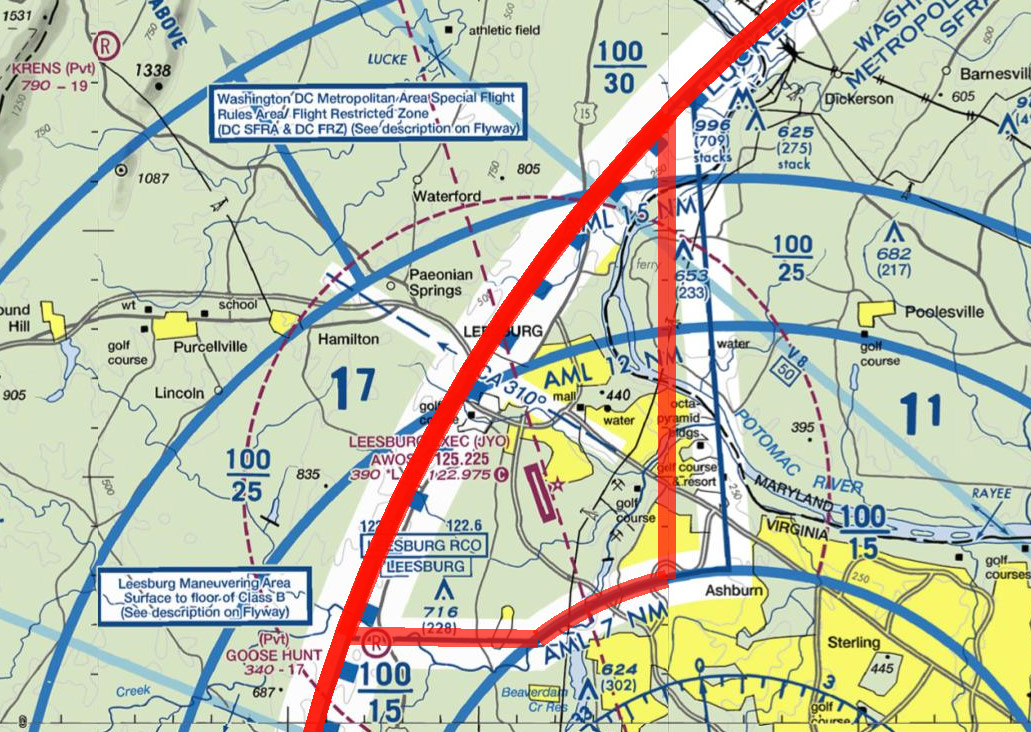No joy for some pilots flying into JYO
Leesburg Manuevering Area violations spike
The FAA has alerted AOPA to a spike in airspace penetration and violations of the Washington, D.C., Special Flight Rules area, particularly stemming from operations at Leesburg Executive Airport (JYO) in Leesburg, Va. Special procedures are in place for operating in the Leesburg Maneuvering Area and at the airport itself.
“The entire aviation community in the Leesburg area needs to be committed to reversing this troubling trend, particularly with what should be busy flying season quickly approaching,” said Melissa McCaffrey, AOPA senior government analyst of air traffic services.
The FAA said that the two biggest violations have been squawking the improper transponder code in the Leesburg Maneuvering Area and entering or exiting the maneuvering area through the SFRA instead of the pre-designated ingress/egress points.
Pilots flying in the Leesburg Maneuvering Area should squawk 1226 when departing or flying into the Leesburg airport. Flying to or departing Leesburg through the maneuvering area does not require a Washington, D.C., SFRA flight plan, but conducting pattern work at the airport requires the special flight plan (pilots will receive a discrete transponder code). Pilots also should study the boundaries of the Leesburg Maneuvering Area to avoid flying into the Washington, D.C., SFRA.
“The Washington, D.C., SFRA airspace area is monitored very closely, and there are serious consequences for violating the established operating requirements and procedures,” McCaffrey said. A violation of the airspace could result in a civil penalty, suspension or revocation of a pilot certificate, or worse, criminal prosecution if the pilot is found to have knowingly and willfully violated the airspace, she said. If an aircraft is determined to pose an imminent security threat, it is possible that deadly force could be used to take down the aircraft.
The FAA requires pilots flying VFR within 60 nautical miles of the Reagan National Airport VOR (DCA VOR) to complete an online training course. While this is a one-time training requirement, pilots should take the course periodically to refresh their knowledge. AOPA encourages pilots to carry the FAA’s kneeboard-friendly print-out of the procedures for the Washington, D.C., SFRA and Leesburg Maneuvering Area.
“Pilots flying at Leesburg should immediately review published procedures, maintain their in-flight situational awareness, and let their fellow pilots know about the problem and encourage them to review the training materials as well,” McCaffrey said.




